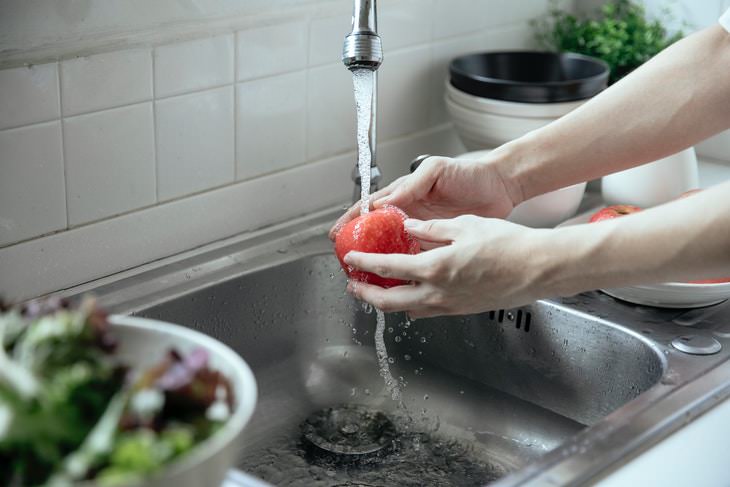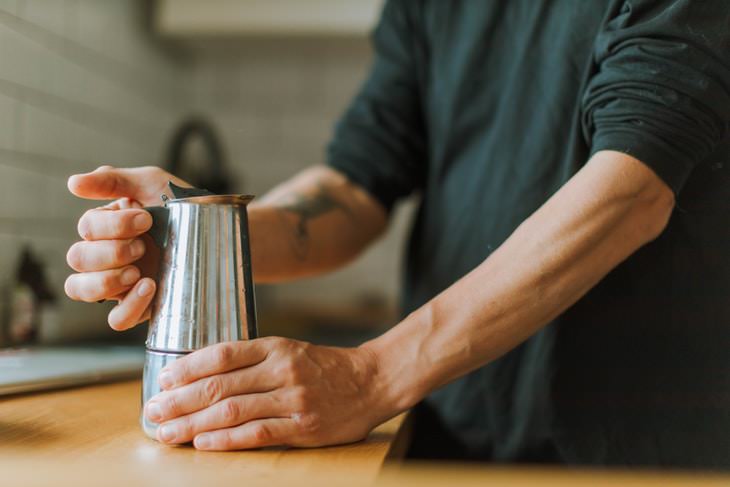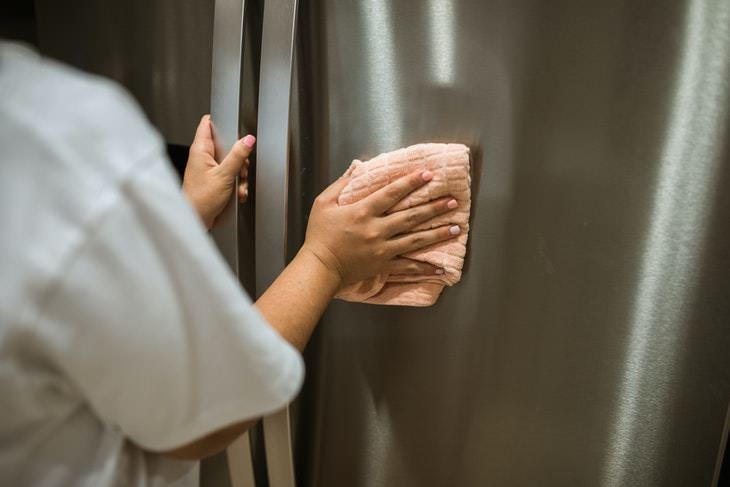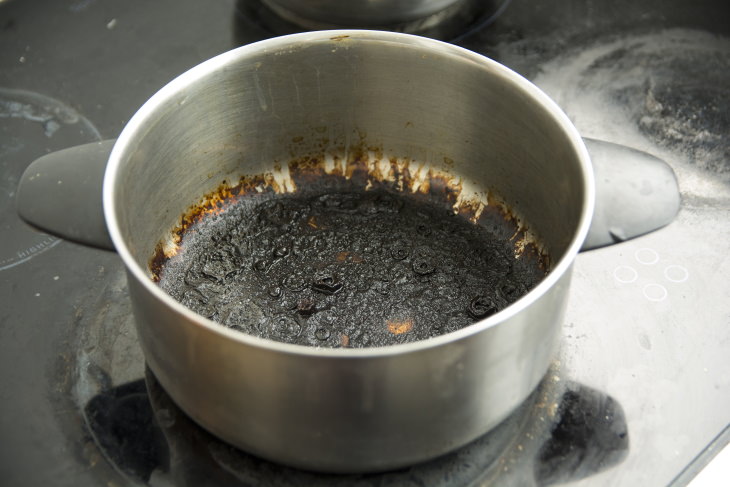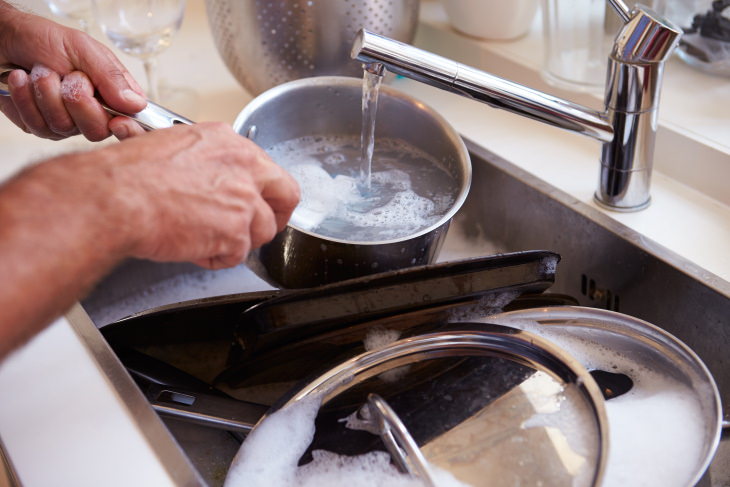For example, water splatters can look quite prominent on kitchen sinks made of this material, and streaks, fingerprint marks, and stains can appear visible on larger appliances like the fridge or oven. Some of your most well-loved tea kettles, pots, and pans can also develop rust or baked-on food stains that can be quite persistent.
Learn to remove all these stubborn stains from everything and anything made of stainless steel, so that your metal appliances continue to serve you for years and years.
What exactly is stainless steel?
Stainless steel is not a pure metal. It’s what is called an alloy, as it is composed of a mixture of iron, chromium, and sometimes other metals like nickel. The chromium gives stainless steel its shiny metallic surface and the ability to resist corrosion. When exposed to the elements, chromium acts as a protective coating on the surface of stainless steel. Even if you scrub it away, this film restores itself, but that doesn’t mean that the finish of stainless steel is scratch-resistant.
In fact, scrubbing a bit too hard or with the help of abrasive cleaning tools like steel wool can ruin the finish, so be mindful of your force and the tools you use when cleaning items made of stainless steel. Listed below are a few more notes on the best technique when cleaning stainless steel:
- Avoid using bleach, ammonia, steel wool, wire brushes, or scouring powder. All of these things can ruin the appearance of stainless steel or may even cause stains.
- Use soft materials, such as microfiber cloths, paper towels, or an old T-shirt to clean stainless steel to prevent scratches.
- Always work with the grain. If a stainless steel surface has a grain pattern, rub the stains in the same direction as the grain. Using circular motions can ruin the finish or lead to streaks.
- Cookware usually doesn’t have a prominent grain pattern and is designed to be more heavy-duty. So when it comes to stainless steel pots and pans, it’s usually okay to scrub in circular motions.
How to get rid of stains and marks on stainless steel
Getting rid of small marks and greasy stains or regular weekly upkeep of stainless steel is a no-brainer. Simply dilute 1 teaspoon of dish soap in 1 liter (4 cups) of warm tap water, and wipe down the surfaces and appliances with the grain. Then rinse with clean hot water and dry with a soft cloth. Drying stainless steel quickly is very important - it will help prevent streaks.
If you’re dealing with more persistent stains and marks, read on.
1. How to get rid of finger marks
Fingerprints are a common issue with stainless steel, especially if you’ve got a stainless steel fridge. Luckily, these can be easily cleaned away using any ammonia-free glass cleaner, like Windex. One important tip - avoid spraying the cleaner directly to the surface, as this could leave you with drip or splatter marks. Instead, spray on the cleaning cloth and wipe down the surface moving with the grain to prevent streaks.
2. Remove persistent food stains and rust with steam
Using steam can go a long way when you need to remove stains from stainless steel cookware, appliances, and kitchen surfaces. Follow these steps to remove burned food stains or even minor rust stains from stainless steel:
1. Boil water in a kettle or any other pot that allows you to pour hot water safely. Wear an apron and some kitchen gloves to protect yourself from burns.
2. Place a paper towel or an old cloth over the stain.
3. Start pouring hot water onto the cloth or towel, enough to wet it and heat it up. Wait for 10 minutes and let the water vapor work its magic.
4. Wipe down or gently rub the stained area with the cloth. Remember to move with the grain. Repeat if necessary.
3. Use a mix of baking soda and dish detergent on baked-on stains
If you’ve tried the steam method and regular cleaners, but you can still see burnt marks on your teapot or frying pan, avoid the temptation of reaching for steel wool. Instead, mix baking soda and dish soap into a paste and use that to gently remove the stains.
Baking soda is also somewhat abrasive, but not so much that it will severely scratch the surface. Use a soft cloth to gently rub the paste on the stain. Remember to resist moving in circular motions and only rub in the same direction as the grain of the metal. Don’t forget to rinse away the cleaner and dry the surface completely with a towel or clean cloth.
4. Clean up a stained pot or pan with vinegar
When using vinegar on stainless steel, tread carefully. Even though vinegar is a gentle acid, it could impact the finish of the surface if you leave it on for more than a few minutes. If you intend to clean a large area or a stain in a visible place, like a gas stovetop, for example, we also recommend that you patch test the vinegar in an inconspicuous area first.
Vinegar works best on lasting stains that you haven’t been able to remove using the previous methods we listed, and it’s the last resort solution before turning to commercial stainless steel cleaners.
Luckily, cleaning stainless steel with vinegar is also rather easy. Just soak a soft cloth in pure vinegar, rub the stain for a couple of minutes, then rinse with pure water and towel-dry the surface, and you’re done.
Share these useful tips with others!

